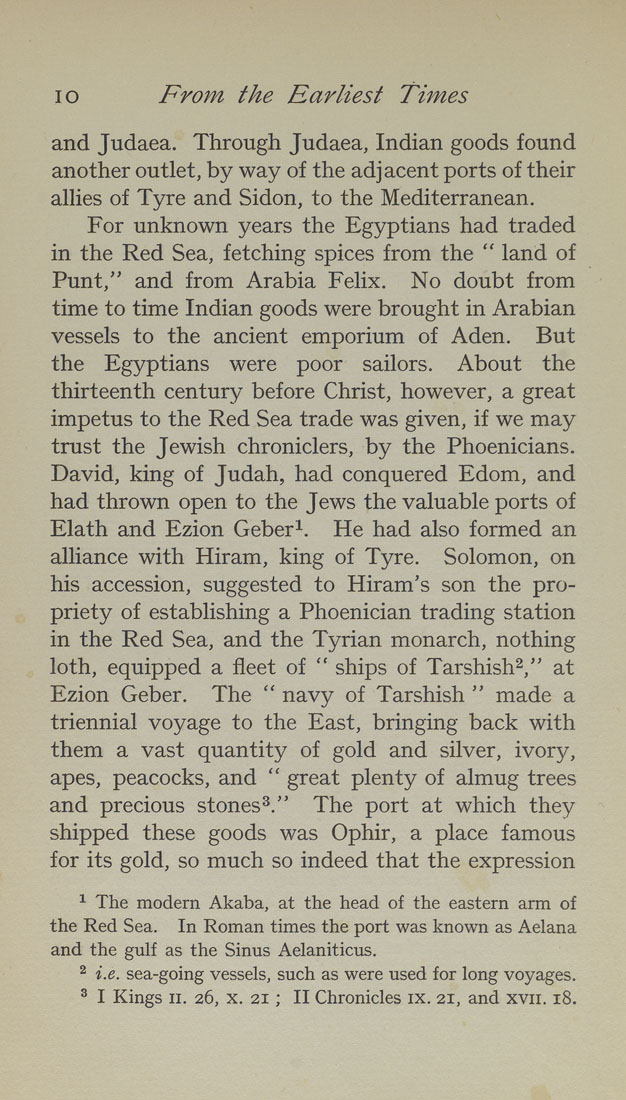lo From the Earliest Times
and Judaea. Through Judaea, Indian goods found
another outlet, by way of the adjacent ports of their
allies of Tyre and Sidon, to the Mediterranean.
For unknown years the Egyptians had traded
in the Red Sea, fetching spices from the " land of
Punt," and from Arabia Felix. No doubt from
time to time Indian goods were brought in Arabian
vessels to the ancient emporium of Aden. But
the Egyptians were poor sailors. About the
thirteenth century before Christ, however, a great
impetus to the Red Sea trade was given, if we may
trust the Jewish chroniclers, by the Phoenicians.
David, king of Judah, had conquered Edom, and
had thrown open to the Jews the valuable ports of
Elath and Ezion Geber^. He had also formed an
alliance with Hiram, king of Tyre. Solomon, on
his accession, suggested to Hiram's son the pro¬
priety of establishing a Phoenician trading station
in the Red Sea, and the Tyrian monarch, nothing
loth, equipped a fleet of " ships of Tarshish^," at
Ezion Geber. The " navy of Tarshish " made a
triennial voyage to the East, bringing back with
them a vast quantity of gold and silver, ivory,
apes, peacocks, and " great plenty of almug trees
and precious stones^." The port at which they
shipped these goods was Ophir, a place famous
for its gold, so much so indeed that the expression
^ The modern Akaba, at the head of the eastern arm of
the Red Sea. In Roman times the port was known as Aelana
and the gulf as the Sinus Aelaniticus.
2 i.e. sea-going vessels, such as were used for long voyages.
^ I Kings II. 26, x. 21; II Chronicles ix. 21, and xvii. 18.
|








